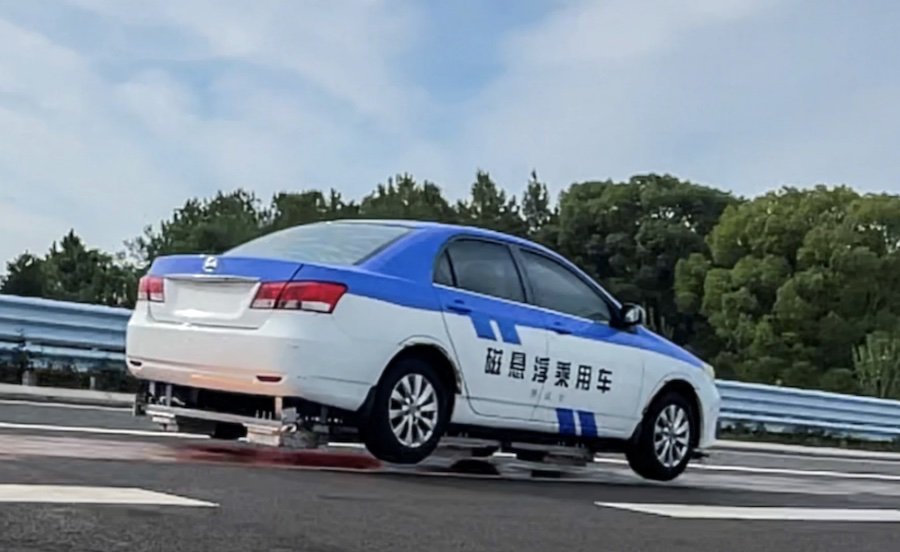China Tests A Flying Car That Hovers Using Tech From Maglev Trains

Chinese scientists built a flying car if you count 1.378 inches (35 millimeters) as flight. It's actually an experiment in magnetic levitation (maglev) technology to "study road design and safety measures for high-speed driving," according to China's Xinhua News Agency.
The researchers at Southwest Jiaotong University laid a conductor rail along a 4.91-mile (7.9-kilometer) stretch of road for the test. Eight vehicles received a permanent magnetic array underneath them.
At their most basic, maglev systems use magnets that repel each other. By adjusting the magnetic field, something like a train (or a car in this case) can move down a track.
The demonstration video only shows the vehicles moving at fairly low speeds, but the maglev tech can achieve high speeds. In one test during this experiment, they hit nearly 143 miles per hour (230 kilometers per hour), according to the Xinhua report.
It's not clear whether the occupant can determine the vehicle's speed while floating or if something to do with the conductor rod in the road sets the velocity. Also, the video indicates there's no steering control because the people in the car are following a predetermined path.
"Our next step will be to focus on the development of the actual vehicle to realize the beautiful vision of seeing the first maglev car ‘floating up and running,'" Dr. Zigang Deng, the team leader of the university's maglev technology research told the South China Morning Post.
None of the reports mention any real-world applications of creating a maglev-capable car. For it to work, there would need to be roads that could support these vehicles.
While creating a maglev-capable vehicle is a new idea, thinking about how one might look isn't so new, In 2017, Renault awarded an industrial design student at Central Saint Martins art college in London for the person's magnetic levitating vehicle. The Float concept was a ball with room for two occupants and several of them could attach together for communal, autonomous motoring.
Related News
